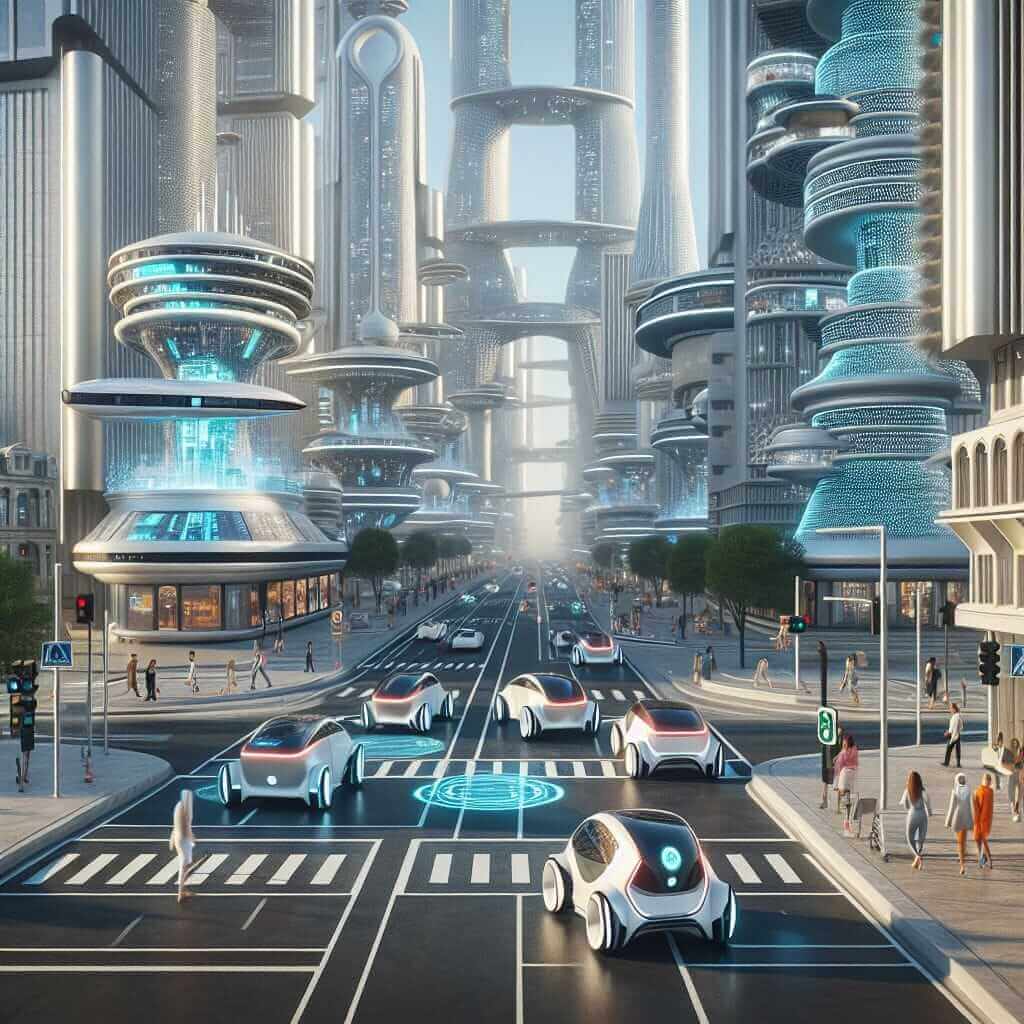The IELTS Reading exam is a critical component of the IELTS test, requiring candidates to comprehend and analyze written texts. One recurring theme in the IELTS Reading section is technological advancements and their impact on society. One such topic that has gained importance recently is “How is the rise of autonomous vehicles impacting urban infrastructure?” This article will explore this subject in depth, providing a comprehensive reading passage, relevant vocabulary, and exam-style questions to enhance your preparation.
Reading Passage: The Impact of Autonomous Vehicles on Urban Infrastructure
Autonomous vehicles, also known as self-driving cars, are poised to revolutionize urban transportation and infrastructure. With advancements in artificial intelligence and machine learning, these vehicles can navigate without human intervention, promising increased safety, efficiency, and convenience. However, this technological shift also brings significant challenges and changes to urban planning and infrastructure development.
One of the most notable impacts of autonomous vehicles is the potential reduction in traffic congestion. Self-driving cars can communicate with each other and optimize routes in real-time, reducing bottlenecks and improving traffic flow. This change could lead to the redesign of road networks, with fewer traffic signals and intersections.
Parking infrastructure is another area likely to undergo significant transformation. With autonomous vehicles, the need for extensive parking spaces in urban centers could diminish. Self-parking cars could drop passengers at their destinations and park themselves in compact, remote locations, freeing up valuable urban land for other uses.
Public transportation systems may also see shifts in demand and operation. Autonomous buses and shuttles could offer on-demand services, providing more efficient and flexible transportation options. This could lead to a reevaluation of current public transit routes and schedules.
Furthermore, the rise of autonomous vehicles could impact logistics and delivery services. Driverless delivery vans and drones could streamline supply chains, reducing the need for large distribution centers within city limits. This change could influence zoning laws and commercial land use.
However, the integration of autonomous vehicles also poses challenges for urban planners. The need for robust and secure communication networks between vehicles and infrastructure is paramount. Cities will need to invest in advanced sensor systems, high-speed internet, and cybersecurity measures to support autonomous vehicle operations.
In conclusion, the rise of autonomous vehicles is set to bring profound changes to urban infrastructure. While there are potential benefits in terms of traffic management and land use, there are also significant challenges that need to be addressed to fully realize the potential of this technology.

Exam-Style Questions
Multiple Choice
-
What is one potential benefit of autonomous vehicles according to the passage?
- A. Increased number of parking spaces
- B. Reduced traffic congestion
- C. Higher demand for manual drivers
- D. Slower traffic flow
-
How might parking infrastructure change with the rise of autonomous vehicles?
- A. More parking spaces needed in city centers
- B. Decreased need for urban parking spaces
- C. Larger distribution centers required
- D. More intersections and traffic signals
Identifying Information (True/False/Not Given)
-
Self-driving cars can optimize routes in real-time to reduce traffic congestion.
- True
- False
- Not Given
-
Autonomous vehicles will entirely replace public transportation systems.
- True
- False
- Not Given
Matching Headings
- Match the following headings to the corresponding paragraphs:
- A. Impact on Public Transportation
- B. Challenges for Urban Planners
- C. Reduction in Traffic Congestion
- D. Changes in Parking Infrastructure
Sentence Completion
- Driverless delivery vans could streamline supply chains, reducing the need for __ within city limits.
Answer Keys and Explanations
-
B. Reduced traffic congestion (The text mentions that self-driving cars can optimize routes in real-time, reducing bottlenecks and improving traffic flow, leading to reduced traffic congestion.)
-
B. Decreased need for urban parking spaces (The passage states that with autonomous vehicles, the need for extensive parking spaces in urban centers could diminish.)
-
True (The text explicitly states that self-driving cars can communicate with each other and optimize routes in real-time to reduce traffic congestion.)
-
False (The passage suggests shifts in demand and operation but does not mention a complete replacement of public transportation systems.)
-
- A to Paragraph 4
- B to Paragraph 6
- C to Paragraph 3
- D to Paragraph 2
-
large distribution centers (The text notes that driverless delivery vans could streamline supply chains, reducing the need for large distribution centers within city limits.)
Common Mistakes in Answering
- Misinterpreting the main idea: Focus on understanding the overall context instead of getting lost in details.
- Overlooking keywords: Pay attention to specific terms that guide you to the correct answers.
- Skimming too quickly: While skimming is a useful technique, ensure a thorough read-through to catch important information.
Vocabulary Highlight
- Autonomous (adjective) /ɔːˈtɒnəməs/: Having the ability to control itself (e.g., an autonomous vehicle)
- Bottleneck (noun) /ˈbɒtlˌnɛk/: A narrow section of road or a junction that impedes traffic flow.
- Zoning laws (noun phrase) /ˈzoʊ.nɪŋ.lɔːz/: Regulations that define how certain areas of land can be used.
Grammar Focus
Relative Clauses
Definition: A relative clause is used to give additional information about a noun.
Example: “Autonomous vehicles, which are also known as self-driving cars, can navigate without human intervention.”
Structure:
- Subject + relative pronoun + verb (e.g., “The car that I bought is new.”)
- Relative pronouns: who, whom, whose, which, that
Tips for High IELTS Reading Scores
- Practice regularly with diverse topics to enhance your comprehension skills.
- Develop skimming and scanning techniques to identify key information quickly.
- Expand your vocabulary to better understand and answer questions accurately.
- Manage your time efficiently during the exam, aiming to answer all questions.
- Review mistakes from practice tests to avoid repeating them in the real exam.
By carefully studying this passage and practicing the related questions, you can improve your reading comprehension skills and boost your IELTS Reading score.